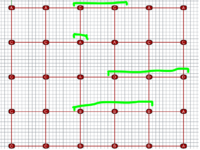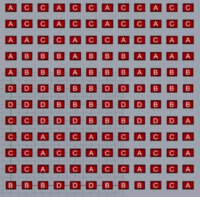shaique.uddin
New member
- Joined
- Jan 15, 2021
- Messages
- 2
Hello all, I am an architect working on a problem related to permutation & combination and I am new to this forum. Kindly excuse my ignorance if I am approaching the forum incorrectly.
I am trying to figure out how to establish the method to calculate the permutation & combination for this question.
We have 6 A's, 6 B's, 6 C's, 6 D's & 6 E's Available to us. There are few conditions for selection though,
1. If A is picked, you must pick only 1 at a time.
2. If B is picked, you must pick 3 at a time.
3. If C is picked, you must pick 2 at a time.
4. If D is picked, you must pick 3 at a time.
5. If E is picked, you must pick 3 at a time.
Now based on these selection condition, We have to select 6 Objects from the collection.
What is the way to calculate the permutation & combination for the above problem.
Any guidance will be really appreciated.
Thank you.
Shaique.
I am trying to figure out how to establish the method to calculate the permutation & combination for this question.
We have 6 A's, 6 B's, 6 C's, 6 D's & 6 E's Available to us. There are few conditions for selection though,
1. If A is picked, you must pick only 1 at a time.
2. If B is picked, you must pick 3 at a time.
3. If C is picked, you must pick 2 at a time.
4. If D is picked, you must pick 3 at a time.
5. If E is picked, you must pick 3 at a time.
Now based on these selection condition, We have to select 6 Objects from the collection.
What is the way to calculate the permutation & combination for the above problem.
Any guidance will be really appreciated.
Thank you.
Shaique.


